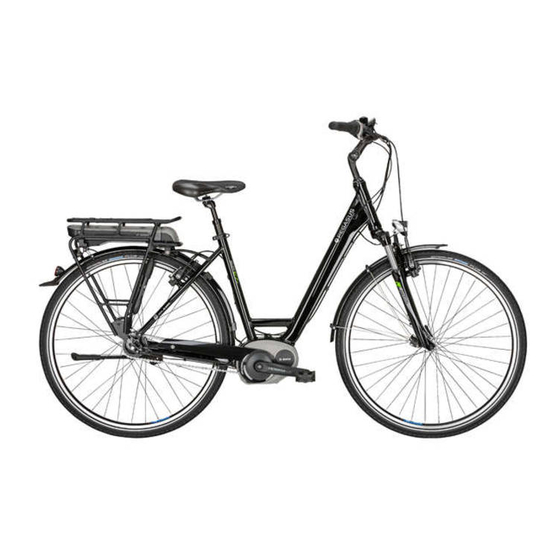
Table of Contents
Advertisement
Quick Links
IMPORTANT
READ CAREFULLY BEFORE USE
KEEP SAFE TO CONSULT AT A LATER DATE
Translation of original operating instructions for
PEGASUS Pedelecs with BOSCH Purion
on-board computer
Ancura E7R HS, Ancura E8R Disc, Orticello E, Piazza E7 F NL, Swing E7R 20", Swing E8 Disc 20"
22-15-2094, 22-15-2095, 22-15-2138, 22-15-2164, 22-15-2165, 22-15-4013
W
W
W
L L K
L K K K K K
K
K
K
K
K
K
K
K
K
K K
K
K K K
K
K
K
K
K
K K
K
K K
K K
K
L
L
L
L L
L
L
L
L L
L
L
L
L
W A
W A
W W A
A
A
A
A
A A
A
A
A
A A
A
A A
A
A
A A
W W W W W W A A
A
A
A
A
A
A
A A
W
W
W
W
W
W W
W W
W
W
W
W
W
W W
W W
W
W
W W
W W
W
W
W
W
W
W
W
W
W
W
W
W
W W
W
W
W
W
W
MY22 P01 - 22 _1.0 _2 0:04 :20 21
K
K
K
A L
A L
A L
Advertisement
Table of Contents






Need help?
Do you have a question about the Ancura E7R HS and is the answer not in the manual?
Questions and answers